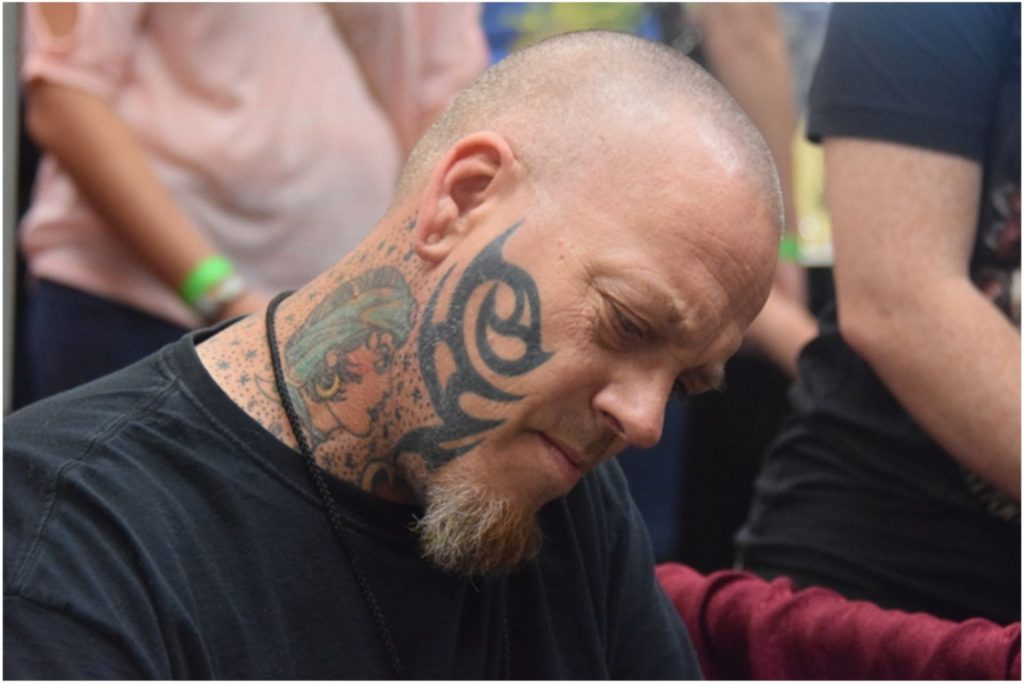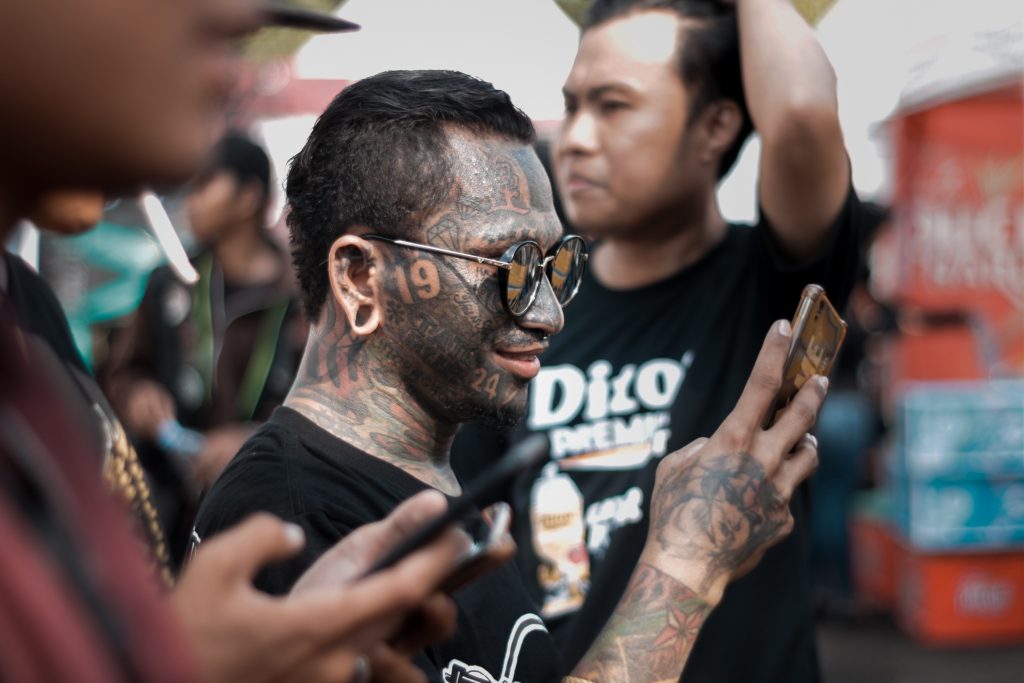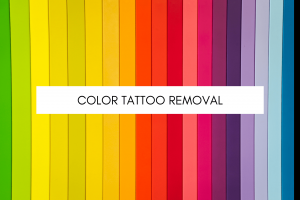
The tattoo industry has been growing rapidly since 2000. During the same time, the number of tattoo removals and cover-ups has also shot up. Face Tattoo Removal is one such procedure.
Face Tattoo
Face tattoos have been stigmatized for a very long time, and its history and cultural significance, ignored. In many ancient indigenous communities, facial tattoos were in fact an important part of the community’s customs and traditions. It meant many different things – it symbolized status, spirituality, beauty, genealogy, and even marital status in some. Nonetheless, there were some communities where a facial tattoo had negative implications – most often used as a sign of criminal punishment. As time passed, face tattoos got beyond the boundaries of traditional practices. In modern times, facial tattoos are considered to be quite an extreme body art decision and are often looked down at. Face/ facial tattoo is still a subject of public scrutiny.
Be that as it may, in the 1990s, reality TV shows, movies, and magazines started covering the tattoo culture giving an immense uplift to its popularity. People started accepting and embracing the Tattoo Culture. Pop culture trends and celebrity fashion has influenced people throughout the world, especially in the West, and Instagram is now flooded with more than 500k pictures of people with #facetattoo.
Stigma Related to Tattoo:
Tattoos are often associated with rebels, outcasts, and non-elites. Some traditional definitions of tattoos include “mark of guilt” and “mark of recognition made on skin of a slave or criminal”. Tattoo positioning is also an important factor that activates social stigma. Some tattoos which are in areas that can be hidden (abdomen, chest, arms, legs) are still considered to be tolerable. However, tattoos in areas of permanent display, such as the neck, face, and hands, are often associated with criminals, addicts, ex/gang members, and individuals who are vulnerable or have negative personality traits.
Face Tattoo Removal

As mentioned earlier, for many people face tattoos give away an unprofessional impression in the corporate sector and an unwelcoming impression in a casual environment. A lot of people find it difficult to get a job with facial tattoos. Thus, people with facial tattoos mostly get those removed to go ahead with their careers. Some may remove it to get an alternative tattoo.
Different Methods of Tattoo Removal
- Laser removal
- Dermabrasion
- Surgical Excision
Generally, tattoo removal works just fine. Laser tattoo removal is the most popular of all the other methods.
Is Laser Method Safe For Face Tattoo Removal
Laser method is safe for facial tattoo removal. Compared to other tattoo removal options, laser removal is considered to be the safest because it is non–ablative and non–invasive. Having said that, the safety of the laser removal procedure will depend on the laser device, additional accessories, and the laser technician.
Factors to Keep in Mind during Face Tattoo Removal
1. Facial Tattoo Removal Pain
Removing face tattoos hurts more than removing tattoos elsewhere on the body because of the lack of fat on the face to work as a cushion to protect from the laser ‘stings’. However, this pain can be reduced with the help of a numbing cream recommended by the laser technicians. Other alternatives are anesthetics (injections), ice packs, and cold air machines to numb the pain.
2. Cost Face Tattoo Removal
The cost of facial tattoo removal is not fixed. The cost varies based on the size, colors, complexity of the design, and the actual number of sessions it takes to remove the tattoo.
3. How many sessions to remove face tattoo
Discolorations (hyper/hypopigmentation), scars and bruises are common after laser tattoo removal. To avoid too much scarring or discoloration, laser technicians try not to remove a lot of ink in one go. A minimum four-week gap is advised between the removal sessions. On average, it takes 5 to 10 sessions for the tattoo to be removed. However, it might also take more than that. A few factors determine the number of sessions required for facial tattoo removal. Some important factors are – location of the tattoo, age of the tattoo, ink density, size, colors of the ink, and health of the individual. Removing face tattoos is comparatively easier due to closer proximity to blood and lymph nodes, which helps in carrying the ink pigment away from the targeted area and out of the system. Older and stick–and–poke tattoos are easier to remove whereas new tattoos are hard to remove. Some colors, such as black, brown dark blue, and green are easier to remove. Removing vastly colorful and large tattoos is time-consuming and expensive compared to smaller and less colorful ones.
Factors leading to difficulty in Tattoo Removal:
Some factors might lead to difficulty while removing tattoos –
- Darker skin
- Pre-existing skin condition
- Other health conditions which affects the skin
However, this does not mean that tattoo removal is impossible for people with any of the above-mentioned conditions, it only implies that the removal procedure is more complex, expensive, and time-consuming.
Precautions to Take Before and During Facial Tattoo Removal

1. Usage of Sunscreen
Sunscreen protects the inked skin from the sun’s UV radiation and sunburn. As the facial skin is thinner compared to the skin on other parts of the body, sun damage caused to facial tattoo is more likely and will affect the healing process.
2. Laser Protection Glasses
Lasers and other light-emitting devices can cause ocular damage. To keep the individual’s eyes safe during the face tattoo removal procedure, it is recommended to wear laser safety glasses.
3. Healthy Lifestyle
A healthy lifestyle helps in faster healing of tattoo removal scars and discolorations. Avoiding alcohol, eating more fruits and vegetables, drinking more water and regular exercise helps in maintaining a healthy lifestyle.




